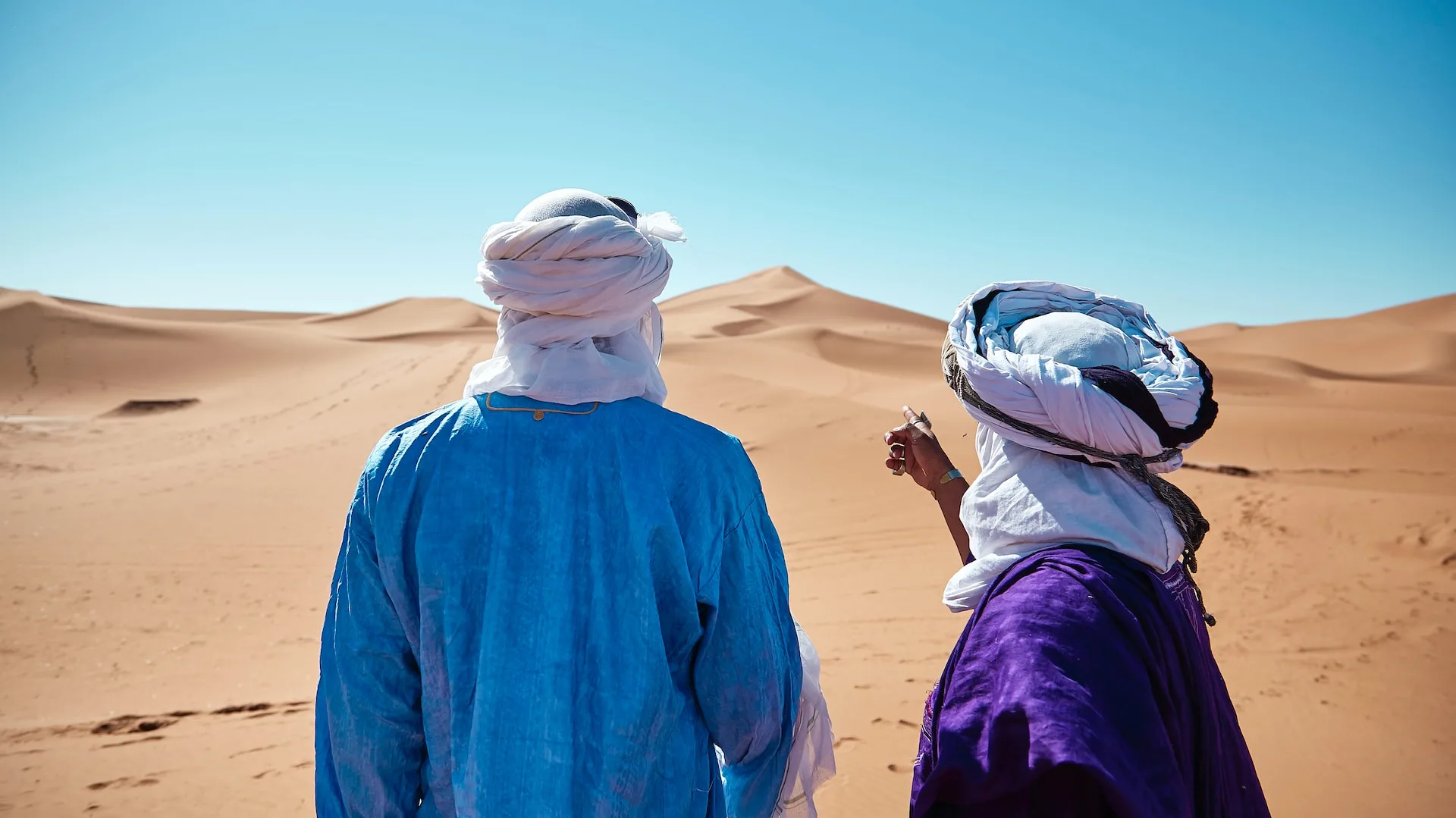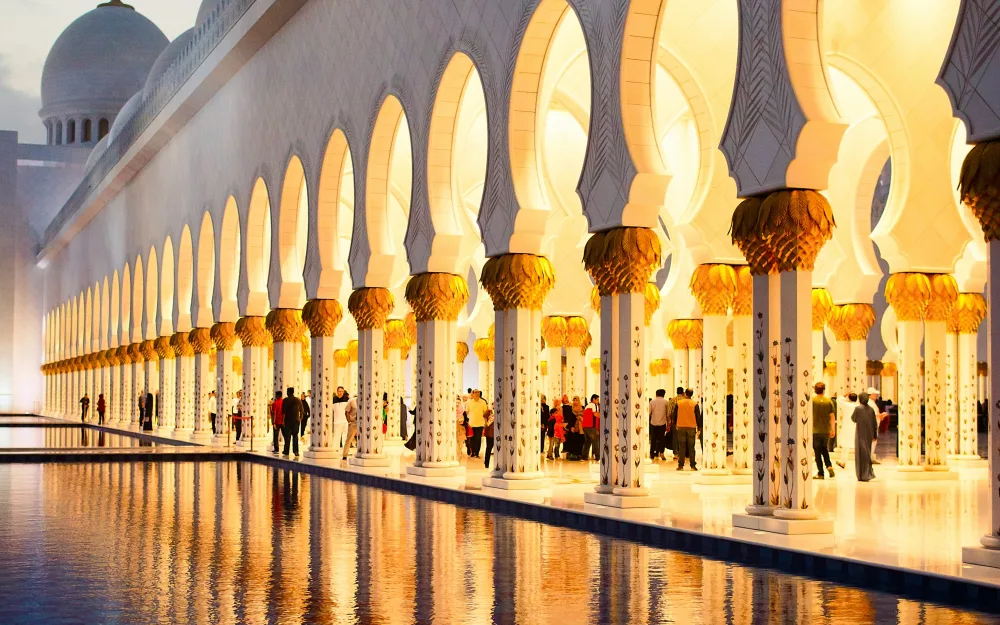The most spoken and known version of Arabic is called MSA. It’s used by people all over the world because it has been taught at universities, found in trade channels or business literature for many years now – yet still not out-of-date whatsoever! We can divide Arabic dialects in 6 major types geographically as the Arab world is very vast.
I think that taking time to develop an ear towards varied intonations/dialect differences would make this process easier than trying my luck guessing what pronunciation might work better when listening between two speakers who speak differently.
Here is the list of 6 types of Arabic dialects geographically,
- MAGHREBI [western Arabic] {hardest}
- SUDANESE
- EGYPTIAN [masri or masry]
- MESOPOTAMIAN [iraqi Arabic]
- ARABIAN PENINSULA [peninsular Arabic or Southern Arabic]
- LEVANTINE ARABIC
1. Maghrebi [Western Arabic] {HARDEST}
Unlike most other languages, Maghrebi Arabic has over 70 million speakers spread across Morocco, Algeria, and Tunisia. It is a dialect that encompasses many smaller ones like Moroccan or Algerian currencies for example but also includes some bigger ones such as Libya’s which nearly 20 million people speak natively!
In fact, there are so many distinctions between it and standard Arabic that Maghrebi Arabic has its own name. It is referred to as Derja, Derija, or Darija. This is spelled in Arabic and means “to rise or advance step by step.”
The deletion of vowel sounds is one characteristic that sets Arabic dialects apart from other languages. For instance, the question “min ayna anta” من ائن أنت (where are you from?) in Moroccan Arabic is translated as “mnin nta.”
There are several unique features introduced through speaking this form rather than MSA like using separate words for “I” instead stating ‘watakta’ (literally: my), preferring feminine pronouns where possible even if they’re not grammatically correct ̵
In Africa, the Maghrebi dialect includes considerable influence from other languages such as French and Spanish. In Libya’s case, this mainly comes through Turkish speakers who immigrated during Ottoman rule while in Morocco you’ll find it infused with Italian due to invasions by Muslim tribes centuries ago…. unlikely that any Berber language would be spoken there since Amazigh people have lived on their land for thousands of years even before Islam arrived!
2. SUDANESE
There are around 17 million native speakers of Sudanese Arabic, which is spoken all over the country. Due to the proximity of the two nations, this dialect is similar to Egyptian Arabic, but it also has unique traits that make it worthy of being considered a separate dialect. Generally, Sudanese Arabic’s pronunciation is more similar to Hejazi Arabic’s.
It has been said that Sudanese Arabic is a pristine and antiquated rendition of Arabic. This is so because numerous ancient pronunciations and writing patterns that other languages have long abandoned are still used in Sudanese Arabic. Egyptian Arabic, which is reasonably true to the current modern standard, represents a significant departure from this.
3. Egyptian [Misry or Masry]
The most widely recognized accent in the Arab world is that of Egypt. The Egyptian Arabic dialect has close to 100 million people using it every day and tens of millions more who are familiar with this language.So it is the most spoken Arabic dialect.
A result from watching movies or listening to music composed within its borders, due largely because they have been so heavily influenced by local culture rather than adopting other forms like Classical Arabic which tend towards traditionalist instead while still remaining understandable across large distances when translated into other languages.
The Egyptian dialect of Arabic has been influenced by French and English – as well as Turkish due to centuries-long Ottoman rule. Words such as battalion (meaning trousers), kawafir meaning “barber” come from this time period when Egyptians were ruled under another country’s administration. Other loanwords include those related to architecture like ‘kobri’ for bridge; terms that pertain specifically to cloth.
The use of the “g” sound instead of the “j” sound found in formal Arabic is its most defining characteristic. The Egyptian dialect will be used to pronounce the word najm (star) in MSA as negm.
The vowel count in spoken Arabic in Egypt is higher than in Modern Standard Arabic. In contrast to MSA’s three short and three long vowels, the Egyptian dialect Arabic features four short and six long vowels.

4. MESOPOTAMIAN [Iraqi Arabic]
Iraq and Arabic-speaking areas of Iran, also parts of Syria, Kuwait, and southeastern Turkey speak this Arabic accent.
Mesopotamian Arabic is also known as Iraqi Arabic dialect. The Arabic Iraqi dialect is spoken by almost 40 million people.
The dialect contains influences from languages spoken in Ancient Mesopotamia and today, including Sumerian.
The Iraqi dialect features two major varieties: Gelet and Qeltu. The former is a more formal way of saying “I said”, while the latter sounds like it came from around here!
The reason for this difference in pronunciation? It’s all about how you say words differently based on your surroundings. For example, if someone from northern Iraq lives near Turkey or Damascus then they’ll probably speak with an accent because those places have been influenced by neighboring languages over time; similarly, southern regions were exposed primarily through Arabic invaders rather than cultural exchanges between Turks/Romans, etc., which lead them down separate paths as well.
The “q” sound can occasionally be substituted by a “g” depending on the region, a trait also seen in Gulf dialects.
The Arabic spoken in Iraq features a few extra-long vowels and more consonants than Modern Standard Arabic. Moreover, Iraqi Arabic words end in consonants rather than vowels.
5. ARABIAN PENINSULA
The Arabic language originated on the Arabian Peninsula, as one might anticipate. There are a lot of what speakers from other places could refer to as more archaic-sounding elements in the dialects spoken here, which are the closest you’ll find to the Classical Arabic of ancient literature.
Peninsular Arabic is spoken in Bahrain, Kuwait, Oman, Qatar, Saudi Arabia, the United Arab Emirates, Yemen, Southern Iraq, and among the Jordanian tribal people.
This dialect is unique in that it combines characteristics of sedentary and Bedouin dialects. It combines contemporary standards with traditional forms that are normally more prevalent in Bedouin dialects. Around the seventh century, numerous tribes and civilizations came together, giving rise to the dialect that is still used today.
The Gulf dialect is one of the important dialects of peninsular dialects.
The Arabic term for the Gulf dialect is “khaleeji.“
The “q” sound will occasionally be replaced with a “g” sound, whereas the “k” sound will occasionally be pronounced as “ch.”
Gulf Arabic is more like a collection of dialects that are so similar that they can all be understood by the same groups and is not necessarily its own dialect.
The lexicon of the Gulf dialect, which is influenced by Persian and Turkish, also includes words from nearby regions and even some from Hindi and English.
6. LEVANTINE
The Levantine dialect is also known as Shami Arabic.38 million people globally speak it.
It is spoken along the 100–200 km wide coastal region of the Eastern Mediterranean. While many speakers still adhere to MSA while writing, this dialect is primarily mainly utilized when speaking.
The Levant region, which encompasses Syria, Lebanon, Jordan, and Palestine, as well as among minor Arabic-speaking populations in Cyprus and Turkey, speaks several dialects.
Despite some minor grammatical changes, each variety is almost entirely mutually understandable with one.
Levantine Arabic is a very fascinating dialect that can be used to understand how ancient languages have affected modern culture.
The th-sound is typically substituted with an “s” or “z” in the Levantine dialect, however, there are regional variations in accent intensity.
For instance, in Palestine, depending on the region, the typical qaf sound can be substituted with “g” or “k,” while the “k” sound can be replaced with “ch.”
Levantine Arabic is influenced by Turkish as well as more modern additions of English and French, as are other dialects of Arabic.
In Levantine Arabic, the “Qaf” is not pronounced and is replaced with an “Alif” sound instead. For example, “My heart” in Classical Arabic would be “Ya Qalbee”, but in Levantine Arabic, it is “Ya Albee”.
Several linguists think the dialect has an Aramaic foundation. Before Islam arrived, the Levant spoke a lot of this language.

GEOGRAPHICALLY EXPLAINED 6 important types of Arabic FAQs:
1.Can all Arabic dialects understand each other?
There are numerous dialects, which can make it difficult for Arabic speakers to communicate with one another. Especially if they are geographically separated.In 6 important types of Arabic dialects.
2. What is the most intelligible Arabic dialect?
Egyptian Arabic is one of the most widely spoken languages in the Arab world. Sudanese Arabic is a dialect of Arabic. Levantine Arabic is a dialect spoken in Palestine, Lebanon, Syria, and western Jordan.
3. Which Arabic dialects are the least intelligible?
Moroccan, Tunisian, Algerian, and Libyan Arabic are the most difficult for speakers of other Arabic dialects to understand because they all have Berber influences, as well as French to some extent.

